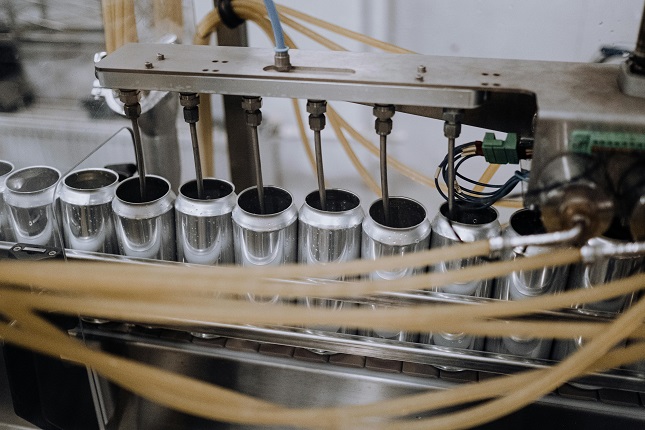Manufacturing success hinges on efficiency. Efficiency is contagious, and it all starts with a smooth-running production line – the beating heart of your operation. Manufacturing efficiency masters, get ready to upgrade your production skills! This article takes a closer look at line balance optimization and reveals the game-changing power of the V-curve concept.
Manufacturers face a sink-or-swim scenario: refine their operations or risk being left behind. One innovative strategy for factories to turbocharge their output is by optimizing line balance, resulting in a trio of benefits: significantly less waste, noteworthy boosts in productivity, and resources being utilized to their full potential. Following these tactics is like charting a course for your business – you’ll avoid rough waters and find yourself in calmer, more profitable seas.
Ready to streamline your manufacturing process? Let’s look at how balancing your production lines can pay off big time.
Understanding Line Balance Optimization
Line balance optimization is a strategic approach to equalizing workload across all stations in a production line. This synchronization seamlessly tightens up the workflow, banishing bottlenecks and-idle time to the trash heap. We essentially take apart the entire workflow, identify the weak links, and reassemble everything to achieve a buttery-smooth operation.
The goal is to match production rate with takt time – the pace at which products must be completed to meet customer demand. When production time aligns perfectly with takt time, you’ve achieved the ideal balance. And then reality hits – the plans we so carefully laid out need tweaking, and fast, if we want to stay ahead of the game.
Key components of line balance optimization include:
- Workload distribution
- Task sequencing
- Resource allocation
- Cycle time analysis
By focusing on these elements, manufacturers can identify inefficiencies and implement targeted improvements. Simplifying our operations has a direct impact on our bottom line: we produce more and spend less.
The V-Curve: A Powerful Tool for Line Balance
Cycle time in a production line takes a dramatic turn based on the number of workstations, and that’s precisely what the V-curve illustrates. Visualizing line balance just got a lot easier – and accurate optimization is now within your reach.
The V-curve gets its name from its characteristic shape:
- The left side of the “V” shows how cycle time decreases as more workstations are added.
- The right side demonstrates how cycle time increases when too many workstations are present, due to increased coordination overhead.
The optimal point – the bottom of the “V” – represents the ideal balance between workstations and cycle time. We’ve hit the mother lode – the spot where efficiency soars and costs plummet.
Utilizing the V-curve in your line balance optimization efforts can help you:
- Pinpoint the perfect workstation count to maximize efficiency.
- Identify areas where your current system is falling short.
- Decision time: allocate resources where they’ll have the greatest impact.
- Picture this: you’ve made the proposed changes – now what?
With this tool in your corner, you’ll be making informed calls that turbocharge your production line’s performance in no time.
Key Concepts in Line Balance Optimization
To master line balance optimization, it’s crucial to understand several fundamental concepts:
Takt Time
Takt time is the heartbeat of your production line. It’s calculated by dividing available production time by customer demand. Get a handle on this metric, and you’ll have a measuring stick for your optimization efforts – a solid foundation for making progress.
Cycle Time
Cycle time represents the time it takes to complete one unit of production at a specific workstation. Ideally, cycle times should be balanced across all stations to maintain smooth flow.
Bottlenecks
Bottlenecks are points in the production process where work accumulates due to slower processing. Fine-tuning your production process means zeroing in on the slowpokes that are holding you back.
Work Element Analysis
This involves breaking down tasks into their smallest components. It breaks down the production process into manageable parts, so you can perfect each one.
Precedence Relationships
To get line balancing right, you need to know the precise sequence of tasks and how each one builds on the last. Some operations must be completed before others can begin.
Take your manufacturing operations to the next level by mastering these critical concepts – with the power to optimize line balance like a pro, you’ll be delivering top-notch results in no time.
Steps to Achieve Optimal Line Balance
Getting the perfect line balance demands a disciplined method. To rev up your production line, start with these five practical steps.
- Analyze Current State: Begin by thoroughly documenting your existing production process. Time to get nitpicky – pinpoint where tasks get stuck, and figure out the best order to tackle them.
- Calculate Takt Time: Determine your takt time based on customer demand and available production time. This will serve as your target for balancing the line.
- Perform Time Studies: Conduct detailed time studies to accurately measure the duration of each task in your production process.
- Create a Precedence Diagram: Lay out a map of how each task fits together and influences the others. This will guide your balancing efforts.
- Identify Imbalances: Compare cycle times across workstations to spot areas of excess capacity or overload.
- Redistribute Workload: Reallocate tasks among workstations to achieve more even distribution. Consider combining or splitting tasks as needed.
- Implement Changes: Put your new line balance into action. Train workers on new procedures and monitor the transition closely.
- Evaluate and Refine: Continuously assess the performance of your balanced line. Make adjustments as needed to maintain optimal efficiency.
Once you’ve implemented these steps, a more streamlined production line will start to take shape.
Tools and Techniques for Line Balance Optimization
Several tools and techniques can aid in your line balance optimization efforts:
Simulation Software
Advanced simulation tools allow you to model different line configurations and predict their impact on performance. Instead of watching your clock tick away, and your budget dwindle, focus on quick and efficient optimization.
Lean Manufacturing Principles
Incorporating lean principles such as 5S, visual management, and standardized work can complement your line balancing efforts.
Statistical Process Control (SPC)
Picture having the upper hand on production variability – that’s what SPC techniques offer, providing real-time insights to help you predict and correct issues before they become major problems.
Value Stream Mapping
Slice through the noise and get a clear-eyed view of your production process with this lean tool – then, zero in on the areas that need a boost.
Unlock the secret to extraordinary line balance: with these impactful tools and savvy techniques, you’ll fine-tune your processes and boost your bottom line.
Overcoming Common Challenges in Line Balancing
Line balance optimization isn’t without its challenges. Here are some common obstacles and strategies to overcome them:
- Variable Processing Times: Use buffer stations or cross-train workers to handle fluctuations in task duration.
- Product Mix Variations: Design flexible workstations that can adapt to different product types.
- Equipment Constraints: Invest in versatile machinery or implement quick changeover techniques to improve flexibility.
- Skill Level Differences: Provide comprehensive training and create standardized work instructions to minimize variability.
- Resistance to Change: Involve workers in the optimization process and communicate the benefits clearly to gain buy-in.
- Data Accuracy: Implement robust data collection systems and regularly validate your measurements.
Face the common hurdles head-on, and you’ll be astonished at how smoothly line balance optimization can be integrated into your facility.
The Role of Technology in Line Balance Optimization
Line balance is no longer a human guessing game – technology has taken the reins, and its influence is growing. Hold on to your hat – we’re witnessing a major overhaul.
IoT Sensors
Machine performance and cycle times are now an open book, thanks to real-time data streaming in from IoT sensors.
AI and Machine Learning
Advanced algorithms can analyze vast amounts of production data to identify patterns and suggest optimal line configurations.
Digital Twin Technology
Creating virtual replicas of production lines allows for risk-free experimentation and optimization.
Augmented Reality (AR)
What’s the secret to achieving a more balanced production line? AR tools that aid workers in performing tasks with greater speed and accuracy, of course!
Teaming up with these advanced technologies, manufacturers can smash through production bottlenecks and streamline their operations like never before.
Maintaining Optimal Line Balance Over Time
Achieving optimal line balance is not a one-time event. You can’t set it and forget it – regular tending is a must. Here are some strategies for maintaining balance over time:
- Regular Audits : Conduct periodic reviews of your line balance to identify any drift from optimal conditions.
- Continuous Improvement Culture : Foster an environment where workers are encouraged to suggest and implement improvements.
- Flexibility Planning : Design your production system to easily adapt to changes in demand or product mix.
- Performance Metrics : Establish and monitor key performance indicators (KPIs) that reflect line balance effectiveness.
- Training and Development : Continuously upskill your workforce to maintain flexibility and efficiency.
- Technology Updates : Line balancing just got a lot easier with the latest innovative solutions available to you.
Efficiency is king in manufacturing, and the throne is surrounded by a balance of well-oiled machine lines. Make optimization a priority and reign supreme.
Conclusion
Improving factory output hinges on perfecting line balance and expertly applying V-curve analysis to expose hidden bottlenecks and areas for growth. Want to blast past the competition? Get these essential concepts under your belt and watch your production soar. You’ll leave the competition in the dust, free to chart your own course in the market.
Remember, the journey to optimal line balance is ongoing. You need to be all in, making choices that are rooted in cold, hard facts, and being willing to shift gears when the situation demands it. But the rewards – increased productivity, reduced costs, and improved quality – make it well worth the effort.
Optimizing your line balance doesn’t have to be a solo act – consider teaming up with experts who’ve been around the block a few times. Harmony in line balancing and V-Curve analysis sets the stage for efficient production. Manufacturing success is within reach when you’ve got the right support – our services deliver data-driven insights to inform your every move.
You hold the key to unlocking a powerhouse production line – all it takes is the willingness to reshape your strategy and leverage the right tools.







































